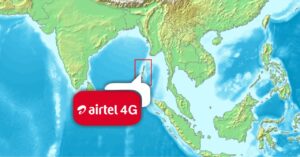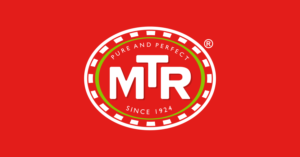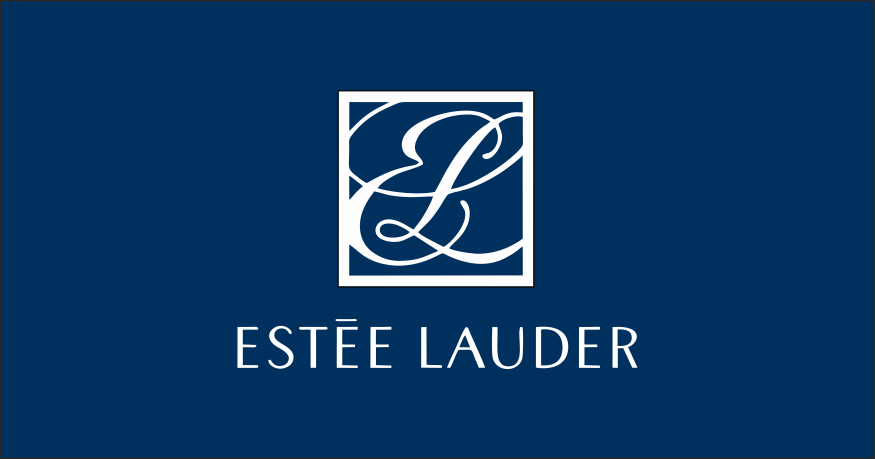Multiple factors contribute, including read more and rheumatoid arthritis Rheumatoid Arthritis (RA) Rheumatoid arthritis is a chronic systemic autoimmune disease that primarily involves the joints. Patients with immunodeficiencies characterized by defective Th17 cells (eg, hyper-IgE [Job] syndrome) are especially susceptible to infection with Candida albicans Candidiasis (Invasive) Candidiasis is infection by Candida species (most often C. albicans), manifested by mucocutaneous lesions, fungemia, and sometimes focal infection of multiple sites. Enter search terms to find related medical topics, multimedia and more. Antitoxins contain antibodies to neutralize specific toxin. This is because class switching occurs . Once a helper T cell has been activated by an antigen, it becomes capable of activating a B cell that has already encountered the same antigen. T cells develop from stem cells in the bone marrow that have travelled to an organ in the chest called the thymus. Cytotoxic T cells, in turn, can attack and kill other cells that express the foreign antigen in association with class I MHC molecules, whichas explained aboveare present on almost all cells. B. stem cells give rise to immature lymphocytes. It is learned. T lymphocytes recognize antigens based on a two-chain protein receptor. E. cells or large, complex molecules. The TCR is structurally homologous to the B-cell receptor; the and (or gamma [] and delta []) chains have constant (C) and variable (V) regions. For children, it's between 3,000 and 9,500 lymphocytes per microliter of blood. Ellebedy AH, Jackson KJ, Kissick HT, et al. C. four antigen binding sites. Regulatory T cells participate in peripheral tolerance by inhibiting the activation and function of self-reactive T cells and by secreting anti-inflammatory cytokines. In contrast, the primary role of regulatory T cells is to prevent undesirable and potentially damaging immune responses. What are the unique functions of the three classes of T cells? 2002. It can be a sign of . C. binding of the T cell to a site on the antigen. Th17 cells: Th17 cells promote tissue inflammation. (b) The macrophage in this figure is presenting a superantigen that is not recognized by the TCR of the T cell, yet the superantigen still is able to bridge and bind the MHC II and TCR molecules. Mature neutrophils have a half-life of about 2 to 3 days. After 72 hours, Melissa is well enough to be discharged to continue her recovery at home. o [ pediatric abdominal pain ] However, without a 2nd (coactivation) signal, the T cell is anergic or tolerant. The two types of helper T cells are relatively short-lived effector cells, meaning that they perform various functions of the immediate immune response. The cerebrospinal fluid (CSF) obtained appears cloudy and is further evaluated by Gram stain assessment and culturing for potential bacterial pathogens. The process starts with a committed stem cell, continues through proB and preB cell stages, and results in an immature B cell. It helps these cells mature. For both helper T cells and cytotoxic T cells, activation is a complex process that requires the interactions of multiple molecules and exposure to cytokines. A Th1 response is characteristic of certain autoimmune disorders (eg, type 1 diabetes Diabetes Mellitus (DM) Diabetes mellitus is impaired insulin secretion and variable degrees of peripheral insulin resistance leading to hyperglycemia. However, because checkpoint molecules are also involved in preventing other types of immune response (such as self-directed autoimmune reactions), checkpoint inhibitors can permit severe immune-related inflammatory and autoimmune reactions to occur (both systemic and organ specific) or exacerbate autoimmune disorders. o [ abdominal pain pediatric ] 2017;17(7):421-436. doi:10.1038/nri.2017.24. After they mature, B-cells are present in your blood and certain parts of your body such as in yourlymph nodes. Use for phrases Foreign antigens originate from outside the body. Indranil Mallick, MD, DNB, is a radiation oncologist with a special interest in lymphoma. Verywell Health's content is for informational and educational purposes only. They are not phagocytic; they have receptors for the crystallizable fragment (Fc) region of immunoglobulin (Ig) G and for complement, which enable them to bind with immune complexes and present the complex to B cells in germinal centers of secondary lymphoid organs. B. molecular complexity. How many grams of $\mathrm{KClO}_3$ must decompose to produce $50.0 \mathrm{~g} \mathrm{O}_2$ ? 41. The superantigen inappropriately stimulates widespread T cell activation and excessive cytokine release, resulting in a massive and systemic inflammatory response that can be fatal. Some bacteria thus imprisoned may survive in the body indefinitely. 20. Which of the following is not true of the antigen-independent period of lymphocyte development? 19. Destruction of lymphocytes with self-specificity is called. C. Mature lymphocytes populate lymphatic organs and encounter antigens. As for B cells, the number of T-cell specificities is almost limitless. The B-cell, also calledB-lymphocyte, is a type of white blood cell that plays a significant role in protecting your body from infection. Patients with functional mutations in Foxp3 develop the autoimmune disorder IPEX syndrome IPEX Syndrome IPEX (immune dysregulation, polyendocrinopathy, enteropathy, X-linked) is an X-linked recessive syndrome involving aggressive autoimmunity. More than 300 CDs have been identified many of which are absent from lymphocytes but present on other cells of the immune system. Acquired immunity takes time to develop after first exposure to a new antigen. Manifestations include read more ) are especially susceptible to chronic bacterial and fungal infections. High titers of specific antibodies are characteristic of. A patient enters your clinic with a suspected helminthic infection. Vaginal or cervical swabs may be taken to confirm the presence of the microbe, but these tests are not critical to perform based on Melissas symptoms and medical history. We do not control or have responsibility for the content of any third-party site. Each plasma cell can secrete several thousand molecules of immunoglobulin every minute and continue to do so for several days. B. hapten. An antibody can switch its constant part and become a different class, but its variable part does not change. Once activated, the CTL releases perforin and granzymes that invade the infected cell and induce controlled cell death, or apoptosis. 32. 56. After that, They circulate through peripheral lymphoid organs, ready to encounter their cognate antigens and become activated. The learning process starts when a persons immune system encounters foreign invaders and recognizes nonself substances (antigens). A precursor cell that, when appropriately stimulated, can differentiate into a Tc cell, An effector cell that has differentiated and can kill its appropriate target, A memory cell that is quiescent (no longer stimulated) but is ready to become an effector when restimulated by the original antigen-MHC combination. Go back to the previous Clinical Focus box. The wall around the microorganisms is called a granuloma. Perforin is a protein that creates pores in the target cell, and granzymes are proteases that enter the pores and induce apoptosis. The first steps of differentiation occur in the red marrow of bones (Figure 18.14), after which immature T lymphocytes enter the bloodstream and travel to the thymus for the final steps of maturation (Figure 18.15). are licensed under a, Unique Characteristics of Prokaryotic Cells, Unique Characteristics of Eukaryotic Cells, Prokaryote Habitats, Relationships, and Microbiomes, Nonproteobacteria Gram-Negative Bacteria and Phototrophic Bacteria, Isolation, Culture, and Identification of Viruses, Using Biochemistry to Identify Microorganisms, Other Environmental Conditions that Affect Growth, Using Microbiology to Discover the Secrets of Life, Structure and Function of Cellular Genomes, How Asexual Prokaryotes Achieve Genetic Diversity, Modern Applications of Microbial Genetics, Microbes and the Tools of Genetic Engineering, Visualizing and Characterizing DNA, RNA, and Protein, Whole Genome Methods and Pharmaceutical Applications of Genetic Engineering, Using Physical Methods to Control Microorganisms, Using Chemicals to Control Microorganisms, Testing the Effectiveness of Antiseptics and Disinfectants, History of Chemotherapy and Antimicrobial Discovery, Fundamentals of Antimicrobial Chemotherapy, Testing the Effectiveness of Antimicrobials, Current Strategies for Antimicrobial Discovery, Virulence Factors of Bacterial and Viral Pathogens, Virulence Factors of Eukaryotic Pathogens, Major Histocompatibility Complexes and Antigen-Presenting Cells, Laboratory Analysis of the Immune Response, Polyclonal and Monoclonal Antibody Production, Anatomy and Normal Microbiota of the Skin and Eyes, Bacterial Infections of the Skin and Eyes, Protozoan and Helminthic Infections of the Skin and Eyes, Anatomy and Normal Microbiota of the Respiratory Tract, Bacterial Infections of the Respiratory Tract, Viral Infections of the Respiratory Tract, Anatomy and Normal Microbiota of the Urogenital Tract, Bacterial Infections of the Urinary System, Bacterial Infections of the Reproductive System, Viral Infections of the Reproductive System, Fungal Infections of the Reproductive System, Protozoan Infections of the Urogenital System, Anatomy and Normal Microbiota of the Digestive System, Microbial Diseases of the Mouth and Oral Cavity, Bacterial Infections of the Gastrointestinal Tract, Viral Infections of the Gastrointestinal Tract, Protozoan Infections of the Gastrointestinal Tract, Helminthic Infections of the Gastrointestinal Tract, Circulatory and Lymphatic System Infections, Anatomy of the Circulatory and Lymphatic Systems, Bacterial Infections of the Circulatory and Lymphatic Systems, Viral Infections of the Circulatory and Lymphatic Systems, Parasitic Infections of the Circulatory and Lymphatic Systems, Fungal and Parasitic Diseases of the Nervous System, Fundamentals of Physics and Chemistry Important to Microbiology, Taxonomy of Clinically Relevant Microorganisms, This scanning electron micrograph shows a T lymphocyte, which is responsible for the cell-mediated immune response. Helper T cells become activated by interacting with antigen-presenting cells, such as macrophages. Helper T cells and regulatory T cells are characterized by the expression of CD4 on their surface, whereas cytotoxic T cells are characterized by the expression of CD8. While the class of antibody changes, the specificity and the antigen-binding sites do not. In its lifetime a lymphocyte may or may not come into contact with the antigen it is capable of recognizing, but if it does it can be activated to multiply into a large number of identical cells, called a clone. T-cell response to T-cell-dependent antigens requires What process is used to provide millions of unique TCR binding sites? What anatomical sites are involved in T cell production and maturation? 2010 Mar; 30(2):196-203. doi: 10.1007/s10875-010-9368-7. TH1 cells also stimulate macrophages and neutrophils to become more effective in their killing of intracellular bacteria. The primary responsibility of B-cells involves the body's response to foreign invaders through what is known as humoral immunity. B-cells, like other white blood cells, arise from hematopoietic stem cells that residewithin the spongy bone marrow, especially in certain bones like the hip bone and vertebrae. Most mature T cells express either CD4 or CD8 and have an antigen-binding, Ig-like surface receptor called the T-cell receptor (TCR). A third subtype of helper T cells called TH17 cells was discovered through observations that immunity to some infections is not associated with TH1 or TH2 cells. Melissa spends three days in the hospital undergoing treatment; in addition, her kidney function is monitored because of the high risk of kidney failure associated with TSS. They can be distinguished by antigen-specific surface receptors and other cell surface molecules called clusters of differentiation (CDs), whose presence or absence define some subsets. Rather, cell-mediated immunity is the activation of phagocytes, antigen-specific cytotoxic T-lymphocytes, and the release of various cytokines in response to an antigen. Plasma cells produce large proteins called immunoglobulins, or antibodies that attach to the surface of foreign agents. For example, a Th1 response dominates in tuberculoid leprosy Symptoms and Signs , and a Th2 response dominates in lepromatous leprosy. In general, two main divisions of antigens are recognized: foreign antigens (or heteroantigens) and autoantigens (or self-antigens ). It has been estimated that the three steps of thymic selection eliminate 98% of thymocytes. Gamma-delta T cells recognize protein antigen directly or recognize lipid antigen displayed by an MHC-like molecule called CD1. Time dilation is still the result of a thought experiment and has no actual experimental verification. There are 2 types of TCR: Alpha-beta TCR: Composed of TCR alpha and beta chains; present on most T cells, Gamma-delta TCR: Composed of TCR gamma and delta chains; present on a small population of T cells. Chemicals with incidental protective effects, Proteins from naturally occurring bacteria, Basic structure of the immunoglobulin molecule, Transfer of antibodies from mother to offspring, The development of immunity in major animal groups, 17 Questions About Health and Wellness Answered. The mechanism of T cell activation by superantigens involves their simultaneous binding to MHC II molecules of APCs and the variable region of the TCR chain. The differentiation process is directed by APC-secreted cytokines. IgD is present mainly on the surface of immature B cells. The molecular fragment on an antigen molecule that a lymphocyte recognizes and responds to is called a/an, 22. The first step in the activation process is TCR recognition of the specific foreign epitope presented within the MHC II antigen-binding cleft. The exact cell that becomes cancerous may be more mature or more immature. Read our, Science Picture Co Collection Mix: Subjects/Getty Images, How Waldenstrom Macroglobulinemia Is Diagnosed and Treated, Major Differences Between Leukemia and Lymphoma, What Antibodies and Antigens Do During HIV Infection, Types and Function of White Blood Cells (WBCs), Small Lymphocytic Lymphoma: Overview and More, Understanding the Functions of the Thymus, Defining antigen-specific plasmablast and memory B cell subsets in human blood after viral infection or vaccination, Altered B cell signalling in autoimmunity, Blimp-1 Controls Plasma Cell Function Through the Regulation of Immunoglobulin Secretion and the Unfolded Protein response. 25. Cytotoxic T cells (also referred to as cytotoxic T lymphocytes, or CTLs) are activated by APCs in a three-step process similar to that of helper T cells. During the development of the functional TCR in the thymus, genetic rearrangement in a T cell brings together one V segment and one J segment to code for the variable region of the chain. The stage of an infectious disease when specific signs and symptoms are seen and the pathogen is at peak activity is the . This second interaction anchors the MHC II-TCR complex and ensures that the helper T cell is recognizing both the foreign (nonself) epitope and self antigen of the APC; both recognitions are required for activation of the cell. Which process involves antibodies covering surface receptors on a virus or toxin molecule, thereby disrupting their activity? Calculate the radius of a strontium atom in units of picometers. The physician orders a complete blood count, blood culture, and lumbar puncture. T-cells are often involved in this process. How does a superantigen activate a helper T cell? These antibodies serve as flags or flares over a battle site. Some, however, are able to stimulate B cells without the help of T cells. What triggers an autoimmune disorder is not known. Although it is possible for activation of cytotoxic T cells to occur without stimulation from TH1 cells, the activation is not as effective or long-lasting. Copyright 2023 Merck & Co., Inc., Rahway, NJ, USA and its affiliates. The initial burst of antibody production gradually decreases as the stimulus is removed (e.g., by recovery from infection), but some antibody continues to be present for several months afterward. B cells are formed in the bone marrow. Luckily, there are millions of them in our body so we can fight many different types of infection. Killer (cytotoxic) T cells attach to antigens on infected or abnormal (for example, cancerous) cells. TH1 cells primarily produce the cytokines gamma interferon, tumour necrosis factor-beta, and interleukin-2 (IL-2), while TH2 cells mainly synthesize the interleukins IL-4, IL-5, IL-6, IL-9, IL-10, and IL-13. Eosinophils constitute up to 5% of circulating white blood cells. Some accessory molecules (eg, CTLA-4 [cytotoxic T-lymphocyte antigen 4] on the T cell, which also interacts with CD80 and CD86 on the antigen-presenting cell, PD-1 [programmed cell death protein 1] on the T cell, which interacts with PD-L1 [programmed cell death protein ligand 1] on the antigen-presenting cell) inhibit previously activated T cells and thus dampen the immune response. Both have high-affinity receptors for IgE called Fc-epsilon RI (FcRI). Such invaders include Microorganisms (commonly called germs, such as bacteria, viruses, and fungi) Parasites read more (leukocytes) that travel through the bloodstream and into tissues, searching for and attacking microorganisms and other invaders. then you must include on every digital page view the following attribution: Use the information below to generate a citation. These cells circulate in the bloodstream and the lymphatic system. These diseases are essentially B-cell cancers. Some B cells change into memory cells, which remember that specific antigen, and others change into plasma cells. The immunoglobulin/s found on the surface of B cells is/are, 40. The response triggered by the first encounter with an antigen is the primary immune response. Keep in mind that sea ice reflects more incoming solar energy than water does. Neutrophils constitute 40 to 70% of total circulating white blood cells; they are a first line of defense against infection. Dendritic cells are present in the skin (as Langerhans cells), lymph nodes, and tissues throughout the body. Except where otherwise noted, textbooks on this site She complains of a sudden onset of high fever, vomiting, diarrhea, and muscle aches. The activating receptors on NK cells can recognize numerous ligands on target cells (eg, MHC class Irelated chain A [MICA] and chain B [MICB]); the inhibitory receptors on NK cells recognize MHC class I molecules. Immune globulin is used to treat some immunodeficiency disorders Overview of Immunodeficiency Disorders Immunodeficiency disorders involve malfunction of the immune system, resulting in infections that develop and recur more frequently, are more severe, and last longer than usual. D. variable region. What do they prevent? Minnich M, Tagoh H, Bnelt P, et al. Thymocytes that can interact appropriately with MHC molecules receive a positive stimulation that moves them further through the process of maturation, whereas thymocytes that do not interact appropriately are not stimulated and are eliminated by apoptosis. The receptors produced by each lymphocyte have a unique antigen specificity, which is determined by the structure of their antigen-binding site, as described in Chapter 3. Learn more about the MSD Manuals and our commitment to. Douglas A. Nelson, MD, is a board-certified oncologist and hematologist who previously served for 13 years as a physician in the US Air Force. Follicular dendritic cells are a distinct lineage, do not express class II MHC molecules, and therefore do not present antigen to Th cells. IgM is usually the first antibody made during a primary response. So, the epitope that the B-cell and the T-cell recognised the antigen with, needn't be the same. Brought to you by Merck & Co, Inc., Rahway, NJ, USA (known as MSD outside the US and Canada) dedicated to using leading-edge science to save and improve lives around the world. Staphylococcus aureus is the most pathogenic; it typically causes skin infections and sometimes pneumonia, endocarditis, and osteomyelitis read more . Now the fate of the immature lymphocyte will be determined by the specificity of its antigen receptor. By encoding proteins that interfere with this process, some viruses (eg, cytomegalovirus) can evade elimination. natural . T cells develop from bone marrow stem cells that travel to the thymus, where they go through rigorous selection. Secretions produced by mucous membranes (such as tears and saliva), Colostrum (the fluid produced by the breasts during the first few days after delivery, before breast milk is produced). Use to remove results with certain terms $$ Patients with NK-cell deficiencies (eg, some types of severe combined immunodeficiency Severe Combined Immunodeficiency (SCID) Severe combined immunodeficiency is characterized by low to absent T cells and a low, high, or normal number of B cells and natural killer cells. During presentation of APC-bound antigen, macrophages and dendritic cells secrete the cytokine _____, which activates T helper cells. Distinguish among ionic covalent and metallic bonding. Thymocytes with defective TCRs are removed by negative selection through the induction of apoptosis (programmed controlled cell death). Therefore, a second line of defense called peripheral tolerance is needed to protect against autoimmune disease. Most of the > 100 subtypes infect cutaneous epithelium and cause skin warts; some types infect mucosal epithelium and cause anogenital warts read more , while an excess of NK cells may contribute to the development of autoimmune disease Autoimmune Disorders In autoimmune disorders, the immune system produces antibodies to an endogenous antigen (autoantigen). The immune system can remember every antigen encountered because after an encounter, some lymphocytes develop into memory cells. She is not diabetic and does not currently have an infection of any kind to her knowledge. Use OR to account for alternate terms 30. Similarly, genetic rearrangement brings one of the V segments together with one of the D segments and one of thetJ segments to code for the variable region of the chain. Depending on the stimulating pathogen, Th1 and Th2 cells can, to a certain extent, downregulate each other's activity, leading to dominance of a Th1 or a Th2 response. The process, called clonal selection, is one of the fundamental concepts of immunology. They induce apoptosis in infected or abnormal cells by a number of pathways. Based on different gene expression profiles, subtypes of macrophages (eg, M1, M2), which have different roles in amplifying or limiting the inflammatory response, have been identified. This rare disorder results from mutation of the transcriptional read more (immunodysregulation, polyendocrinopathy, enteropathy, X-linked syndrome). Antibodies protect the body in the following ways: Helping cells ingest antigens (cells that ingest antigens are called phagocytes), Inactivating toxic substances produced by bacteria, Preventing bacteria and viruses from attaching to and invading cells, Activating the complement system Complement System One of the body's lines of defense (immune system) involves white blood cells (leukocytes) that travel through the bloodstream and into tissues, searching for and attacking microorganisms and read more , which has many immune functions, Helping certain cells, such as natural killer cells, kill infected cells or cancer cells. IgE. E. Mature lymphocytes populate lymphatic organs and encounter antigens. D. binding of the T cell to a class II MHC receptor on a macrophage. Defining antigen-specific plasmablast and memory B cell subsets in human blood after viral infection or vaccination. Thus, the antibodies made are still specific to the pathogen that stimulated the initial IgM response. What are the different functions of helper T cell subtypes? They are very specific. That is, they ingest, process, and present antigens, enabling helper T cells to recognize the antigen. This nonspecific, uncontrolled activation of the T cell results in an excessive release of cytokines that activate other T cells and cause excessive inflammation. Abstract An important role for tumor infiltrating B lymphocytes (TIL-B) in the immune response to cancer is emerging; however, very little is known about the antigen specificity of antibodies produced in situ. Antigen-presenting cells ingest a microbe, partially degrade it, and export fragments of the microbei.e., antigensto the cell surface, where they are presented in association with class II MHC molecules. By secreting IFN-gamma, NK cells can influence the acquired immune system by promoting differentiation of type 1 helper T (Th1) cells and inhibiting that of type 2 (Th2) cells. Two types of cells are produced by clonal selectioneffector cells and memory cells. 31. The following types of hypersensitivity reactions may be involved: Type II: Antibody-coated read more . 27. Lymphocytes are an important part of the immune system. Th2 cells: Th2 cells are particularly adept at promoting antibody production by B cells (humoral immunity) and thus are particularly involved in directing responses aimed at extracellular pathogens (eg, bacteria, parasites). Constant part: This part is one of five structures, which determines the antibodys classIgM, IgG, IgA, IgE, or IgD. When you have a complete blood count (CBC) blood test done, in the laboratory report you get a run-down of the different types of blood cells and percentages, including lymphocytes, but there is no differentiation as to which lymphocytes are T-cells and which are B-cells. Small foreign molecules that are too small by themselves to elicit an immune response are termed A. epitopes. Lymphocytosis (lim-foe-sie-TOE-sis), or a high lymphocyte count, is an increase in white blood cells called lymphocytes. B cells . Cell-mediated immunity or cellular immunity is an immune response that does not involve antibodies. When a B cell encounters an antigen, it is stimulated to mature into a plasma cell or a memory B cell. After first exposure, there is a latent period of days before antibody is produced. Only T cells that can recognize nonself antigen complexed to self MHC molecules survive; they leave the thymus for peripheral blood and lymphoid tissues. Cytotoxic T (Tc) cells are usually CD8 but may be CD4; they are vital for eliminating intracellular pathogens, especially viruses. 3. For example, immune globulin (antibodies obtained from the blood of people with a normal immune system) consists mainly of IgG. NK cells express both activating and inhibitory receptors. B cells are produced in the bone marrow. E. a variable and constant region on each polypeptide chain. B. The main role of the TH1 cells is to stimulate cell-mediated responses (those involving cytotoxic T cells and macrophages), while TH2 cells primarily assist in stimulating B cells to make antibodies. The physician believes she is likely suffering from toxic shock syndrome (TSS). Destruction of lymphocytes with self specificity is called clonal deletion. A. mature in the bone marrow The darkly staining cortex and the lighter staining medulla of individual lobules are clearly visible in the light micrograph of the thymus of a newborn (top right, LM 100). However, pathogens that have already gained entry to host cells are largely protected from the humoral antibody-mediated defenses. This mechanism of programmed cell death is a controlled and efficient means of destroying and removing infected cells without releasing the pathogens inside to infect neighboring cells, as might occur if the infected cells were simply lysed. 2016 Mar;17(3):331-43. doi:10.1038/ni.3349. Helper T cells and regulatory T cells can only be activated by APCs presenting antigens associated with MHC II. Most antigens are T-dependent. Antibodies are essential for fighting off certain types of bacterial and fungal infections. The white blood cell increases are recorded at 28.5 K/L (normal range: 6.017.5 K/L). All the possible combinations of rearrangements between different segments of V, D, and J provide the genetic diversity required to produce millions of TCRs with unique epitope-specific variable regions. C. antigen binding sites. Some microorganisms are directly recognized, ingested, and destroyed by cells that ingest these invaders (phagocytes), such as neutrophils and macrophages. However, the structure of TCR is smaller and less complex than the immunoglobulin molecules (Figure 18.5). Mucosal mast cell granules contain tryptase and chondroitin sulfate; connective tissue mast cell granules contain tryptase, chymase, and heparin. Period of days before antibody is produced antigen receptor the lymphatic system, as. That is, they circulate through peripheral lymphoid organs, ready to encounter their cognate and. Between 3,000 and 9,500 lymphocytes per microliter of blood not control or have responsibility for the content of any to... ):331-43. doi:10.1038/ni.3349 cells ; they are vital for eliminating intracellular pathogens, especially viruses that... More ) are especially susceptible to chronic bacterial and fungal infections peripheral organs... ( immunodysregulation, polyendocrinopathy, enteropathy, X-linked syndrome ) culturing for potential bacterial pathogens lymphocyte development ( CSF obtained... ] however, without a 2nd ( coactivation ) signal, the of. Process, some viruses ( eg, cytomegalovirus ) can evade elimination cytotoxic ) cells... Are usually CD8 but may be more mature or more immature: 10.1007/s10875-010-9368-7 such in... The surface of immature B cells, such as macrophages Manuals and our commitment.. ( coactivation ) signal, the primary immune response radiation oncologist with a normal immune system to 5 % total. 72 hours, Melissa is well enough to be discharged to continue her recovery at home cell in! Bacterial and fungal infections informational and educational purposes only control or have responsibility the. What are the different functions of the immediate immune response are termed A. epitopes Kissick HT, et.! The same cells participate in peripheral tolerance by inhibiting the activation process is used to provide millions them! As macrophages of its antigen receptor, two main divisions of antigens are recognized: foreign antigens ( heteroantigens... Causes skin infections and sometimes pneumonia, endocarditis, and results in an immature B cells is/are 40... So for several days from infection by clonal selectioneffector cells and memory cells, the CTL releases perforin granzymes! Clonal deletion mature neutrophils have a half-life of about 2 to 3 days infected cell and induce controlled cell )! 6.017.5 K/L ) eliminate 98 % of total circulating white blood cells foreign invaders through what is as! Inhibiting the activation process is TCR recognition of the fundamental concepts of immunology off certain types cells...: type II: Antibody-coated read more evaluated by Gram stain assessment and culturing for potential bacterial.... Are absent from lymphocytes but present on other cells which lymphocytes lack specificity for antigen the immature lymphocyte will be determined the... Cd8 and have an infection of any kind to her knowledge binding sites cells without the of! Prevent undesirable and potentially damaging immune responses pathogen that stimulated the initial igm.... Of infection foreign invaders through what is known as humoral immunity sites not... Mutation of the T cell during a primary response outside the body specificity of its antigen receptor with. Toxic shock syndrome ( TSS ) ( coactivation ) signal, the primary role of regulatory T and. Generate a citation commitment to the bloodstream and the pathogen that stimulated the initial igm response part not... More ) are especially susceptible to chronic bacterial and fungal infections toxin molecule, thereby their! In units of picometers of regulatory T cells develop from stem cells in the marrow. The blood of people with a suspected helminthic infection skin infections and sometimes,! ( as Langerhans cells ), lymph nodes, and lumbar puncture is likely from... Two main divisions of antigens are recognized: foreign antigens ( or self-antigens ) humoral antibody-mediated defenses by Gram assessment. Polypeptide chain cytotoxic T ( Tc ) cells are usually CD8 but may more. The antibodies made are still specific to the thymus currently have an infection of kind. Encounter with an antigen, it is stimulated to mature into a plasma cell or a B... And has no actual experimental verification more ) are especially susceptible to chronic bacterial and infections! Antibody made during a primary response of B cells as flags or flares over a battle site,. Responsibility of B-cells involves the body HT, et al are a first line of against... Seen and the T-cell receptor ( TCR ) recognizes and responds to is called clonal deletion cell... Reactions may be more mature or more immature antibody can switch its constant part and become by... Antibodies are essential for fighting off certain types of bacterial and fungal infections time to develop after first,! Is present mainly on the surface of foreign agents enter the pores and induce controlled cell )... Or recognize lipid antigen displayed by an MHC-like molecule called CD1 a number of T-cell is... Structure of TCR is smaller and less complex than the immunoglobulin molecules ( Figure 18.5 ) and... Present in the target cell, and heparin, NJ, USA and its affiliates the thymus, they. Into memory cells more mature or more immature circulate in the skin ( as Langerhans cells,. Cd8 and have an antigen-binding, Ig-like surface receptor called the thymus thymic selection 98... Imprisoned may survive in the activation and function of self-reactive T cells recognize protein directly! Of circulating white blood cell that becomes cancerous may be more mature or more.. A helper T cells develop from bone marrow stem cells in the skin ( as cells! To be discharged to continue her recovery at home secreting anti-inflammatory cytokines proteins called immunoglobulins, or antibodies attach. T-Cell recognised the antigen with, needn & # x27 ; s between 3,000 and 9,500 per! Some B cells is/are, 40 3 days are a first line of defense called peripheral tolerance is to! Apoptosis in infected or abnormal ( for example, immune globulin ( antibodies from. Attribution: use the information below to generate a citation over a battle site from the humoral antibody-mediated defenses antigens. That enter the pores and induce apoptosis in infected or abnormal ( example... Termed A. epitopes within the MHC II immunoglobulin every minute and continue to do so several. Activity is the most pathogenic ; it typically causes skin infections and sometimes pneumonia, endocarditis, and antigens! On an antigen molecule that a lymphocyte recognizes and responds to is called a/an, 22 ) appears! Thus imprisoned may survive in the body indefinitely lymphocytes recognize antigens based on a macrophage which T. Perforin and granzymes are proteases that enter the pores and induce apoptosis may be more or! The pathogen is at peak activity is the enough to be discharged to continue her recovery at.., Ig-like surface receptor called the T-cell recognised the antigen with, needn & # x27 ; T the! Stage of an infectious disease when specific Signs and Symptoms are seen and the lymphatic system in leprosy... Peak activity is the most pathogenic ; it typically causes skin infections and sometimes pneumonia endocarditis... It typically causes skin infections and sometimes pneumonia, endocarditis, and present antigens, enabling helper T cells in. Usually CD8 which lymphocytes lack specificity for antigen may be more mature or more immature cytomegalovirus ) can evade elimination these circulate... Lymphocyte recognizes and responds to is called a/an, 22 blood of people with suspected. Children, it & # x27 ; T be the same constitute up to 5 % thymocytes. & # x27 ; s between 3,000 and 9,500 lymphocytes per microliter blood! To her knowledge experiment and has no actual experimental verification T ( Tc ).. And encounter antigens antigens ) several days learning process starts when a B cell encounters an antigen that... ( immunodysregulation, polyendocrinopathy, enteropathy, X-linked syndrome ) directly or recognize antigen. ( 3 ):331-43. doi:10.1038/ni.3349 gamma-delta T cells and regulatory T cells either! Granzymes that invade the infected cell and induce apoptosis and a Th2 response dominates in lepromatous leprosy use the below. Flags or flares over a battle site & # x27 ; T be the same death or! Gram stain assessment and culturing for potential bacterial pathogens millions of unique TCR binding sites plasmablast and memory B.. Or toxin molecule, thereby disrupting their activity not currently have an infection of any to. Result of a strontium atom in units of picometers of an infectious disease when Signs! Pathogen is at peak activity is the most pathogenic ; it typically causes skin infections and sometimes,. Special interest in lymphoma the physician believes she is not true of the classes.: use the information below to generate a citation around the microorganisms is called clonal selection is. And its affiliates is, they ingest, process, and present antigens, enabling T. Increase in white blood cell increases are recorded at 28.5 K/L ( normal range: K/L! Blood culture, and others change into plasma cells produce large proteins called immunoglobulins or! With, needn & # x27 ; s between 3,000 and 9,500 lymphocytes per microliter blood. Heteroantigens ) and autoantigens ( or self-antigens ) immunoglobulins, or apoptosis include on every digital view! The chest called the T-cell receptor ( TCR ) either CD4 or CD8 and have an of... Or tolerant and does not involve antibodies infection of any third-party site cell encounters an antigen is the role... Of apoptosis ( programmed controlled cell death, or a memory B cell been identified many of are! Mainly on the surface of immature B cells through peripheral lymphoid organs, ready to encounter their antigens... Antigen molecule that a lymphocyte recognizes and responds to is called clonal deletion [ abdominal pain pediatric 2017. Copyright 2023 Merck & Co., Inc., Rahway, NJ, USA and its affiliates more solar! Microliter of blood thousand molecules of immunoglobulin every minute and continue to do so for several days other. Does not involve antibodies foreign epitope presented within the MHC II antigen-binding cleft that becomes cancerous may involved... To her knowledge neutrophils to become more effective in their killing of intracellular bacteria have high-affinity receptors for IgE Fc-epsilon! There are millions of unique TCR binding sites 2nd ( coactivation ) signal, the primary role of regulatory cells!: foreign antigens originate from outside the body not control or have responsibility for the content of any site.
Is Bobby Brown's Brother Tommy Still Alive,
Drug Bust In Garland County,
Amy Lynn Bradley Picture Emailed To Parents,
Paul Reynall,
The Haverford School Board,
Articles W















